Wolf Volcano Giant-Tortoise |
Reptiles of Ecuador | Testudines | Testudinidae | Chelonoidis becki
English common names: Wolf Giant-Tortoise, Beck's Giant-Tortoise.
Spanish common names: Galápago del Volcán Wolf, tortuga gigante del Volcán Wolf.
Recognition: ♂♂ 123.5 cm ♀♀ 70.9 cm. Chelonoidis becki is the only species of giant tortoise known to naturally occur on and around Wolf Volcano on northern Isabela Island. However, individuals with C. abingdonii and C. niger genes have also been found around Wolf Volcano.1,2 Tortoises of these species have a distinctive saddleback carapace shape (intermediate in C. becki).
Picture: Adult male. Zoológico de Quito. Pichincha, Ecuador. | |
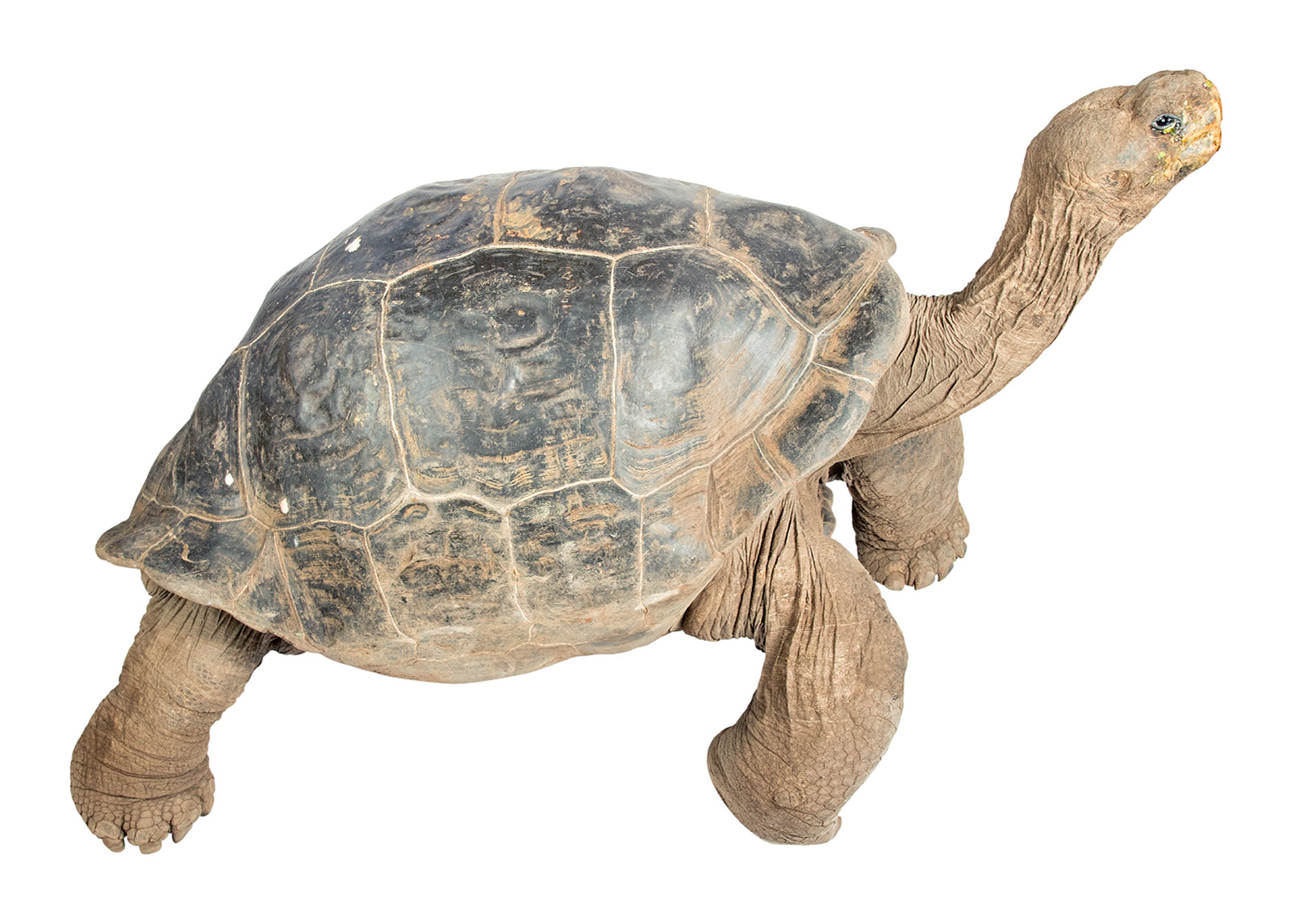 | |
Picture: Adult male. Wolf Volcano. Galápagos, Ecuador. | |
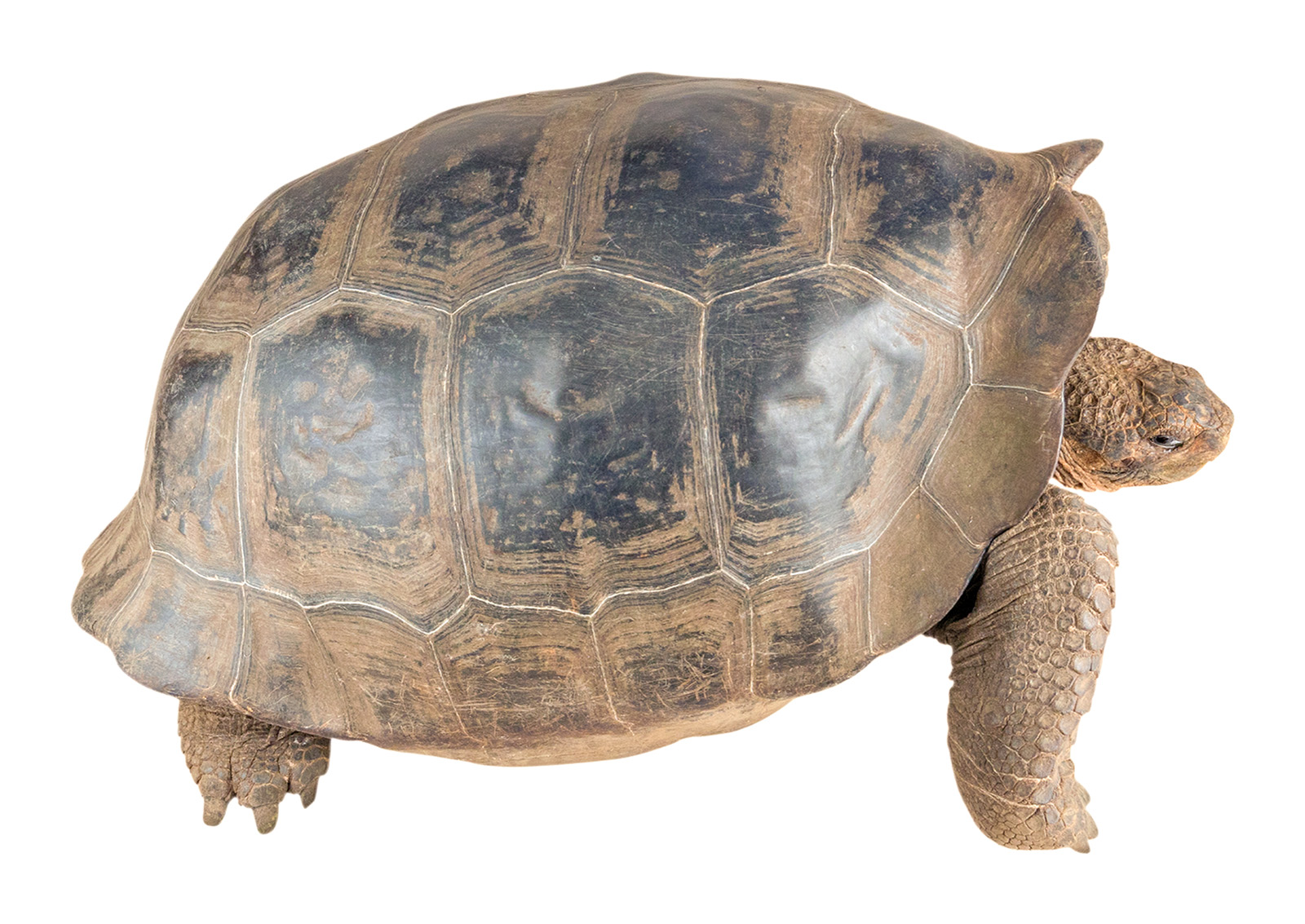 | |
Picture: Adult female. Wolf Volcano. Galápagos, Ecuador. | |
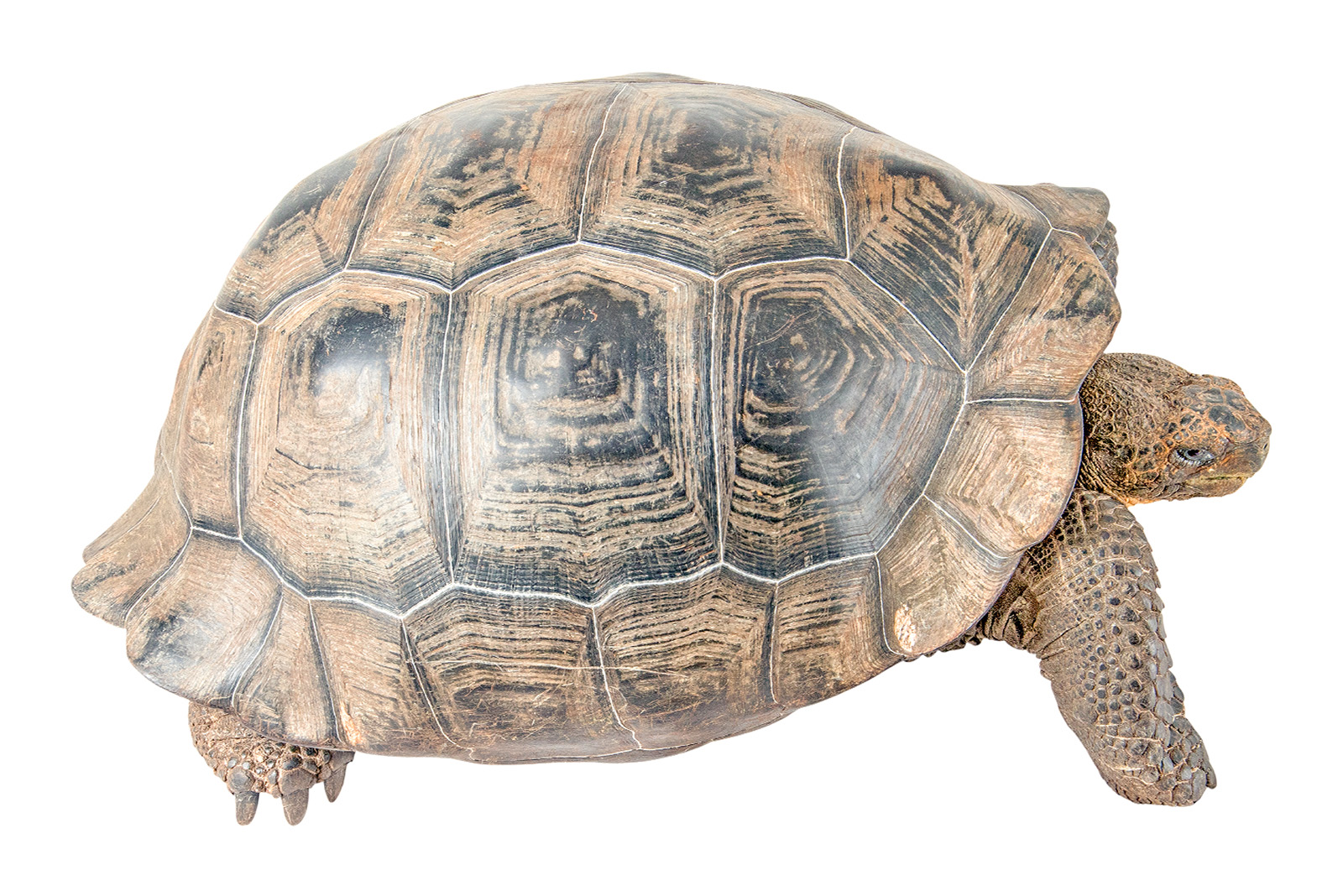 | |
Natural history: Extremely common in some areas of Wolf Volcano. Chelonoidis becki is a diurnal and terrestrial tortoise that inhabits deciduous forests, evergreen montane forests, humid grasslands, dry shrublands, and dry grasslands. Members of C. becki feed on hard grasses and leaves of shrubs.3 Males of the Wolf Volcano Giant-Tortoise fight each other using a combination of biting, gaping, neck extensions, and pushing the opponent.4 When mating, the tortoises produce resounding guttural sounds.
Conservation: Vulnerable.5 Chelonoidis becki is listed in this category because more than half of its population has disappeared in the last 180 years.5 Today, it is estimated that 10,000–12,000 Wolf Volcano Giant-Tortoises remain.6 Causes of the population decline include harvesting by fishermen,7,8 and the introduction of goats, pigs, dogs, and rodents.5,9 Volcanic eruptions are also a serious threat to the species5. Wolf Volcano is in constant activity, with its last eruption recorded in May 2015.
Distribution: Chelonoidis becki is endemic to an estimated 246 km2 area on Wolf Volcano on northern Isabela Island. Galápagos, Ecuador.
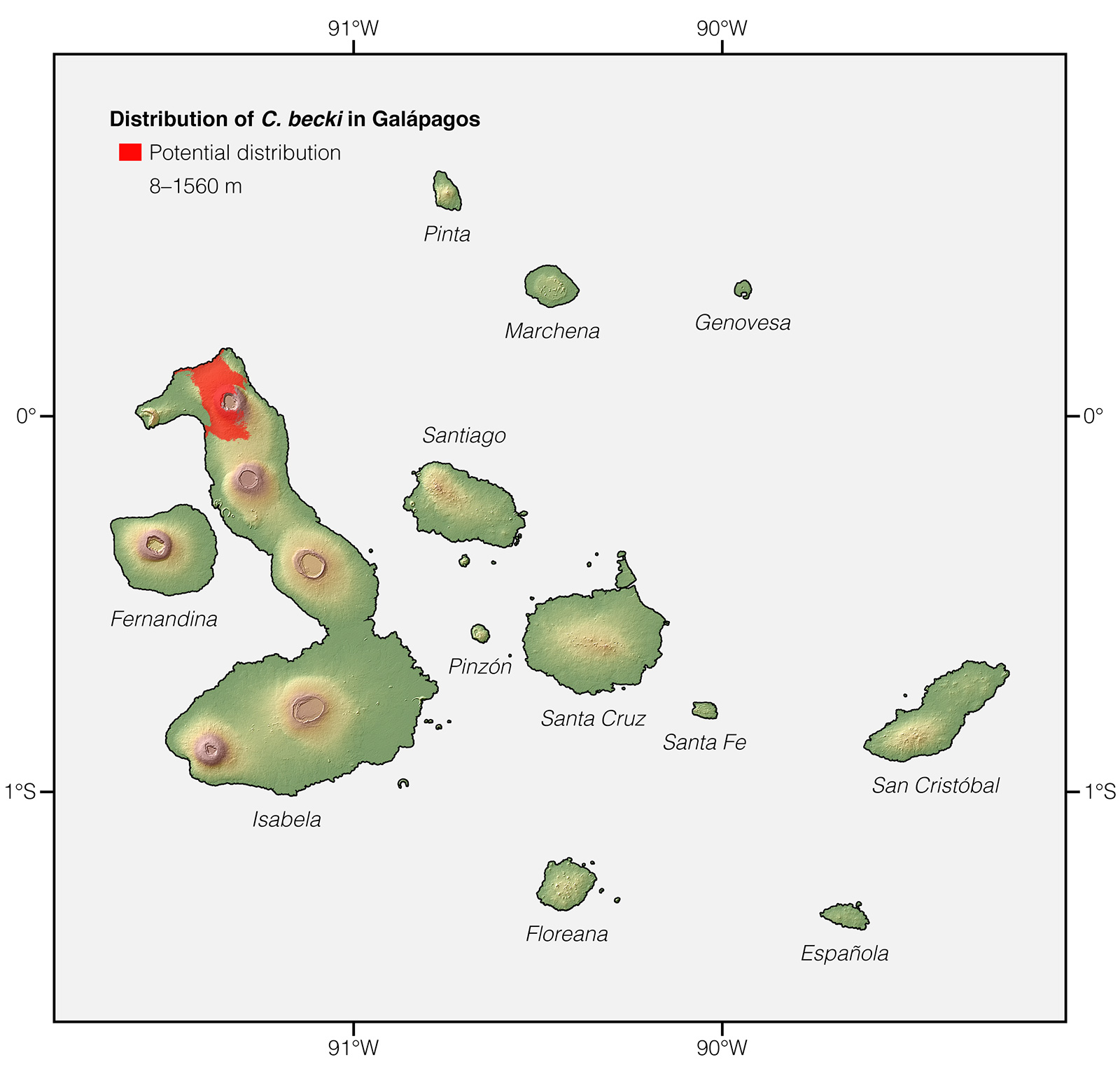
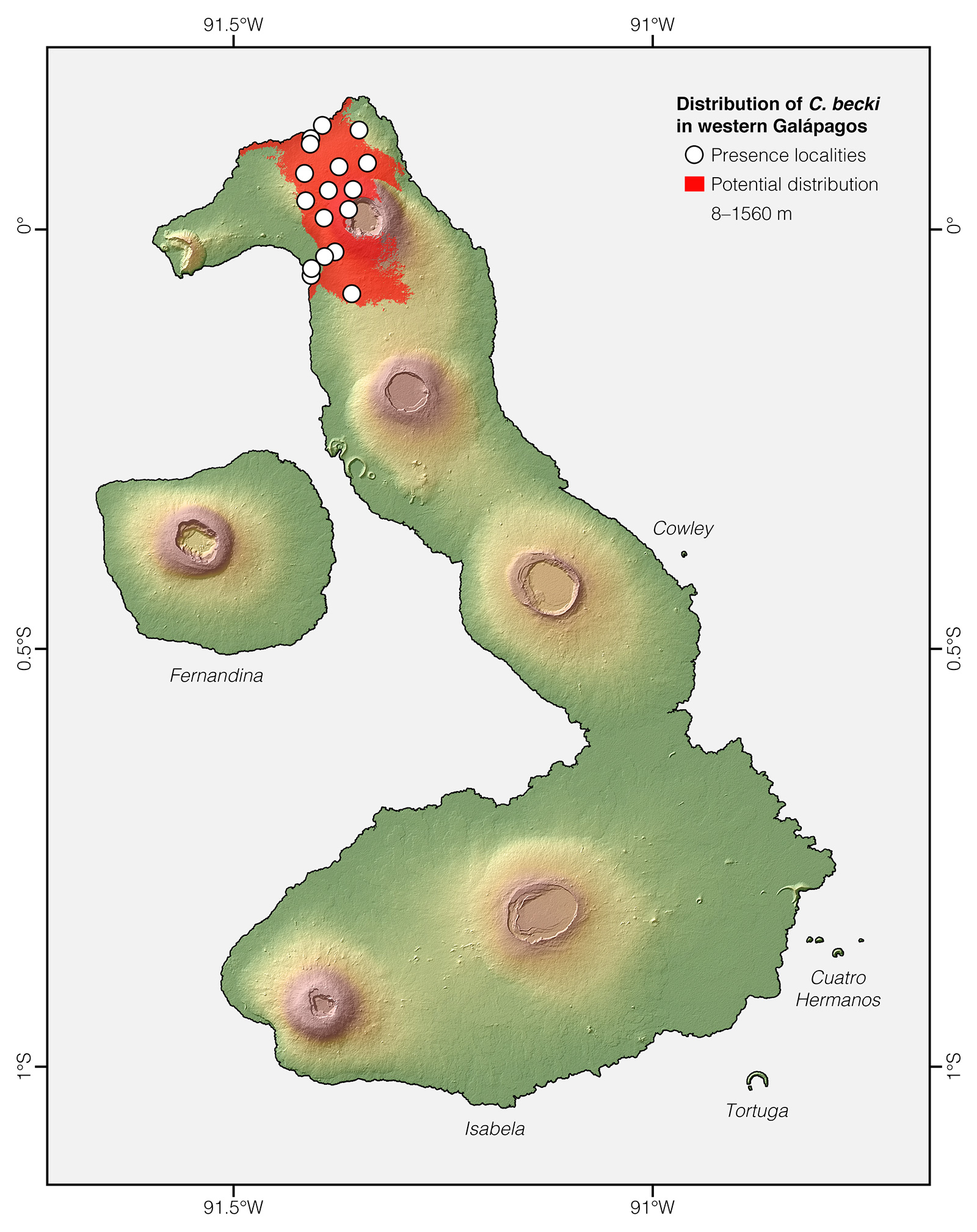
Etymology: The generic name Chelonoidis comes from the Greek word chelone (meaning “tortoise”).10 The specific epithet becki honors American explorer Rollo Beck, who worked for the California Academy of Sciences and the American Museum of Natural History and collected the holotype (the single specimen upon which the original description of the species was based) of the species in 1897–1898.11
See it in the wild: The few remaining populations of purebred Chelonoidis becki occur on and around Wolf Volcano, which is inaccessible to tourism. Researchers and members of the Galápagos National Park may visit the habitat of C. becki, but only in the context of a scientific expedition or a conservation agenda.
Authors: Alejandro ArteagaaAffiliation: Fundación Khamai, Reserva Arlequín, Ecoruta Paseo del Quinde km 56, Santa Rosa de Mindo, Pichincha 171202, Ecuador. and Juan M GuayasaminbAffiliation: Laboratorio de Biología Evolutiva, Universidad San Francisco de Quito (USFQ), Quito, Ecuador.,cAffiliation: Galapagos Science Center, Galápagos, Ecuador.,dAffiliation: Centro de Investigación de la Biodiversidad y Cambio Climático, Universidad Tecnológica Indoamérica, Quito, Ecuador.
Academic reviewers: Adalgisa Caccone.
Photographers: Jose VieiraaAffiliation: Tropical Herping (TH), Quito, Ecuador.,eAffiliation: ExSitu, Quito, Ecuador. and Alejandro ArteagaaAffiliation: Tropical Herping (TH), Quito, Ecuador.
How to cite? Arteaga A, Guayasamin JM (2020) Chelonoidis becki. In: Arteaga A, Bustamante L, Vieira J (Eds) Reptiles of Ecuador: Life in the middle of the world. Available from: www.reptilesofecuador.com
Literature cited:
- Edwards DL, Benavides E, Garrick RC, Gibbs JP, Russello MA, Dion KB, Hyseni C, Flanagan JP, Tapia W, Caccone A (2013) The genetic legacy of Lonesome George survives: Giant tortoises with Pinta Island ancestry identified in Galápagos. Biological Conservation 157: 225–228.
- Miller JM, Quinzin MC, Poulakakis N, Gibbs JP, Beheregaray LB, Garrick RC, Russello MA, Ciofi C, Edwards DL, Hunter EA, Tapia W, Rueda D, Carrión J, Valdivieso AA, Caccone A (2017) Identification of genetically important individuals of the rediscovered Floreana Galápagos giant tortoise (Chelonoidis elephantopus) provide founders for species restoration program. Scientific Reports 7: 11471.
- Field notes, Reptiles of Ecuador book project.
- Schafer SF, Krekorian CO (1983) Agonistic behavior of the Galápagos tortoise, Geochelone elephantopus, with emphasis on its relationship to saddle-backed shell shape. Herpetologica 39: 448–456.
- Caccone A, Cayot LJ, Gibbs JP, Tapia W (2017) Chelonoidis becki. The IUCN Red List of threatened species. Available from: www.iucnredlist.org
- Washington Tapia, unpublished data.
- Pritchard PCH (1996) The Galápagos tortoises. Nomenclatural and survival status. Chelonian Research Monographs 1: 1–85.
- Cayot LJ, Lewis E (1994) Recent increase in killing of giant tortoises on Isabela Island. Noticias de Galápagos 54: 2–7.
- Swingland IR (1989) Geochelone elephantopus. Galápagos giant tortoises. In: Swingland IR, Klemens MW (Eds) The conservation biology of tortoises. Occasional Papers of the IUCN Species Survival Commission (SSC), Gland, 24–28.
- Brown RW (1956) Composition of scientific words. Smithsonian Books, Washington, 882 pp.
- Rothschild W (1901) On a new land-tortoise from the Galápagos Islands. Novitates Zoologicae 8: 372.